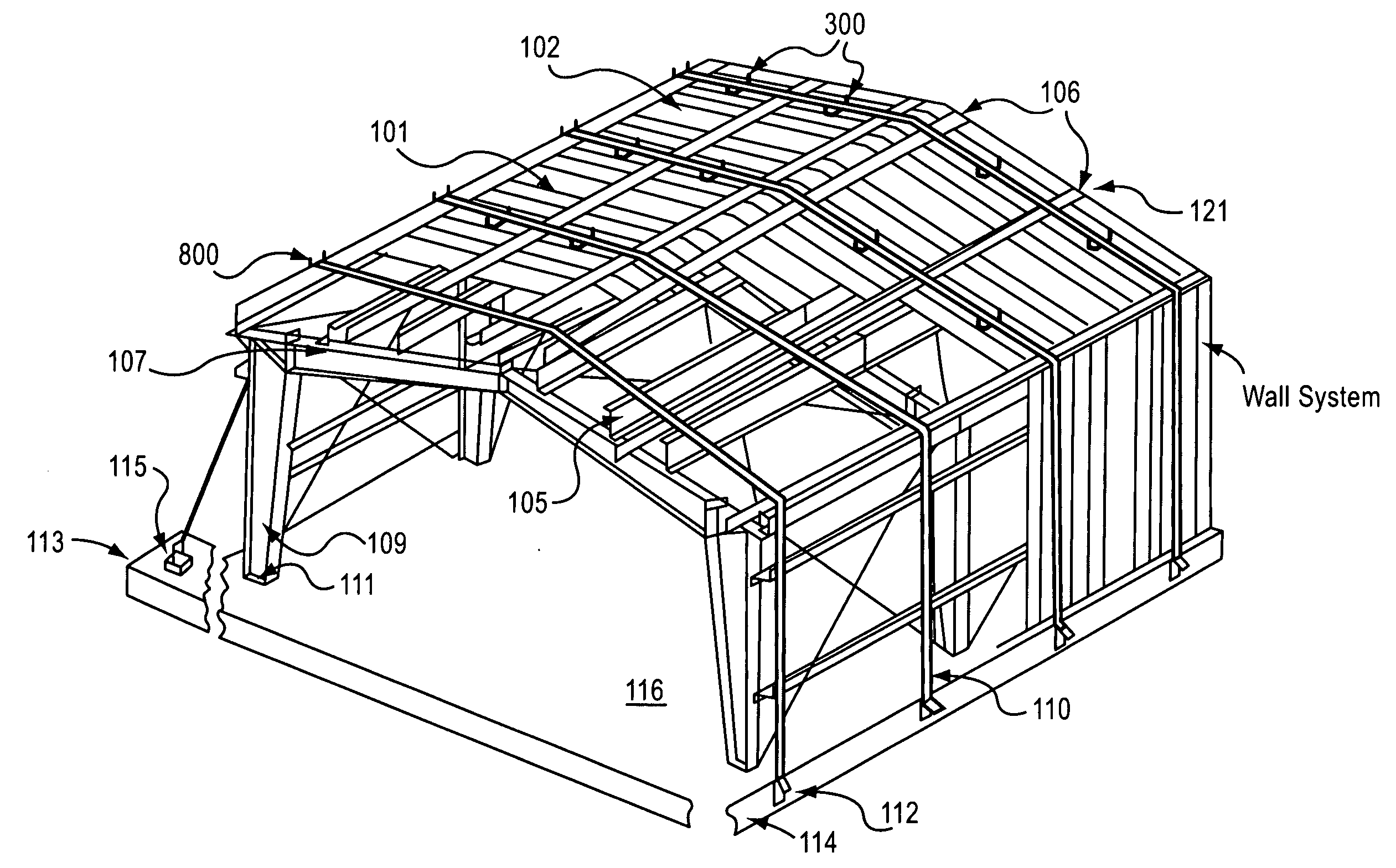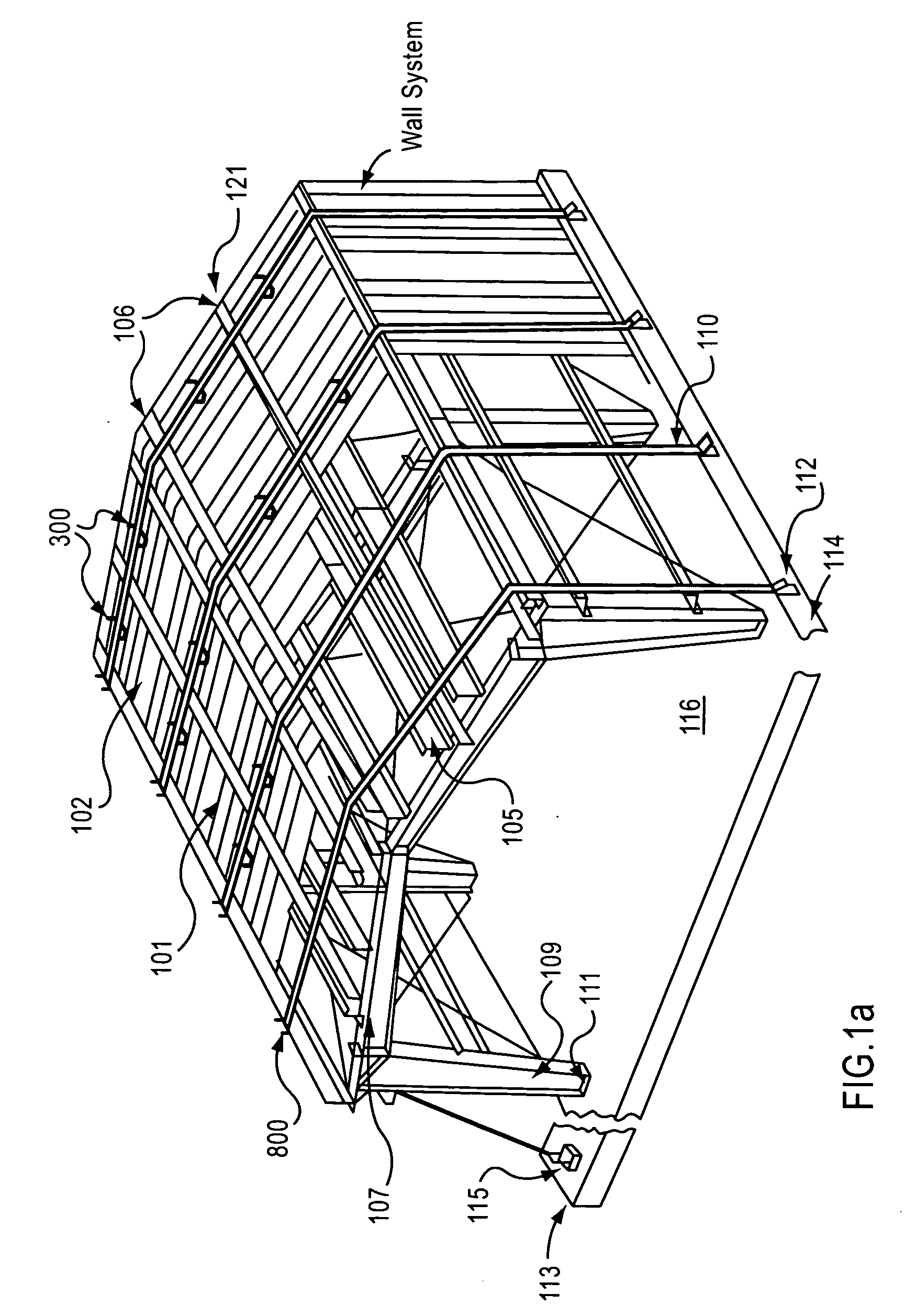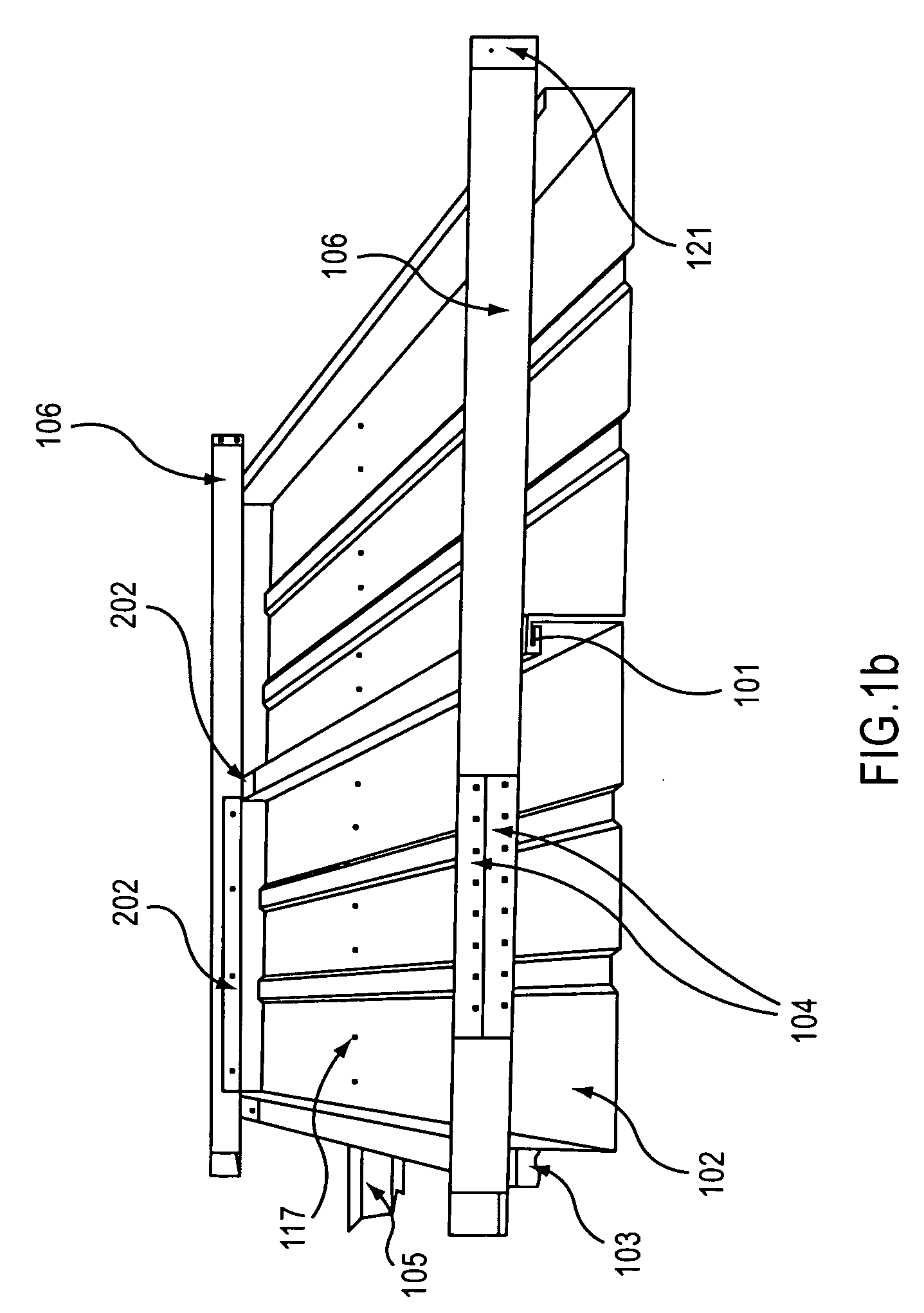Apparatus and method for securing a roof assembly during a severe wind storm
- Summary
- Abstract
- Description
- Claims
- Application Information
AI Technical Summary
Benefits of technology
Problems solved by technology
Method used
Image
Examples
Embodiment Construction
[0025]Reference will now be made to the preferred embodiments of the present invention, examples of which are illustrated in the accompanying drawings.
[0026]The present invention provides a method for strengthening a roof with, for example, aluminium channels, which may be permanently or temporarily placed at the eaves, mid span, and ridge of the building. The roof is able to accept an extremely strong, low stretch strapping system which is installed over the channelling system and threaded into ratchets fastened to the foundation of the building and tightened. The building's entire roof assembly is, therefore, provided a positive downward load disbursement, which passes through the tie-down assembly directly to the foundation of the building.
[0027]FIG. 1a illustrates an embodiment of the present invention in which a plurality of tie-down straps 110 are tensioned between a corresponding plurality of anchors 112,115, secured at predetermined distances at opposites sides along a found...
PUM
 Login to View More
Login to View More Abstract
Description
Claims
Application Information
 Login to View More
Login to View More - R&D
- Intellectual Property
- Life Sciences
- Materials
- Tech Scout
- Unparalleled Data Quality
- Higher Quality Content
- 60% Fewer Hallucinations
Browse by: Latest US Patents, China's latest patents, Technical Efficacy Thesaurus, Application Domain, Technology Topic, Popular Technical Reports.
© 2025 PatSnap. All rights reserved.Legal|Privacy policy|Modern Slavery Act Transparency Statement|Sitemap|About US| Contact US: help@patsnap.com



